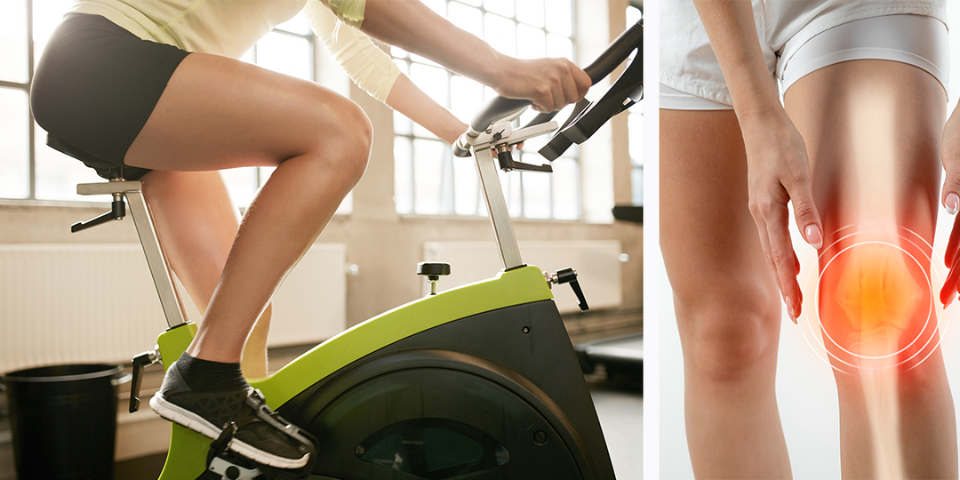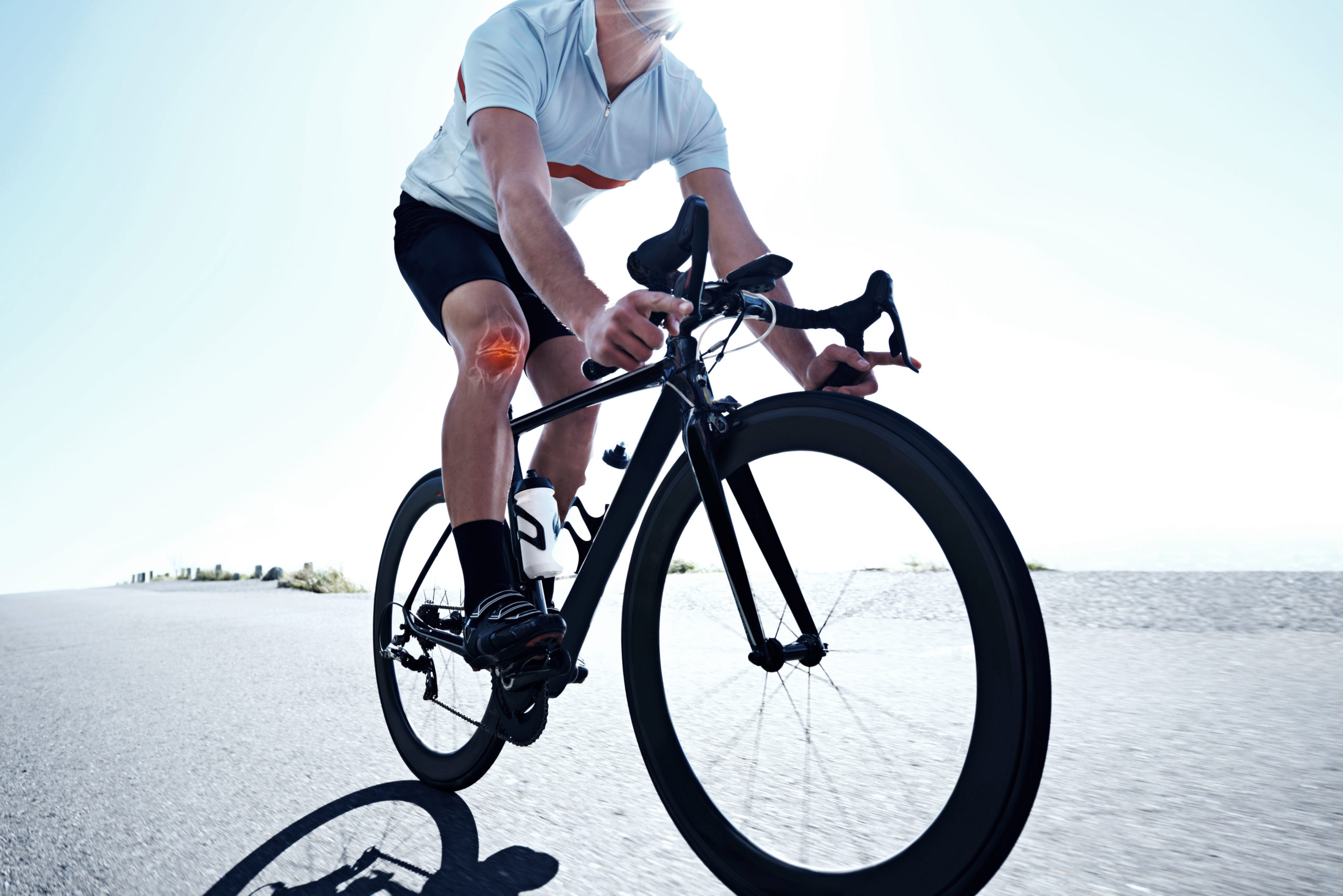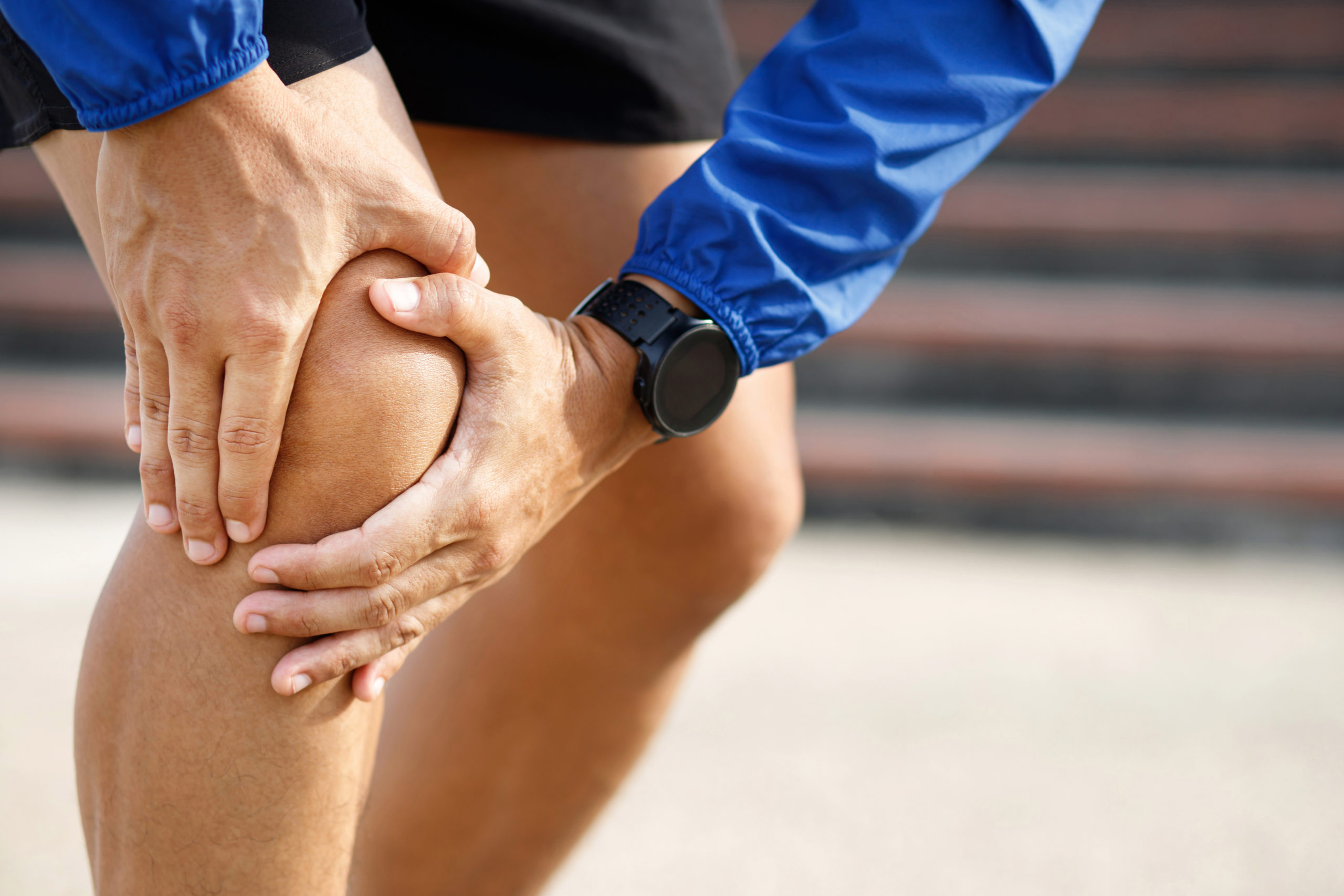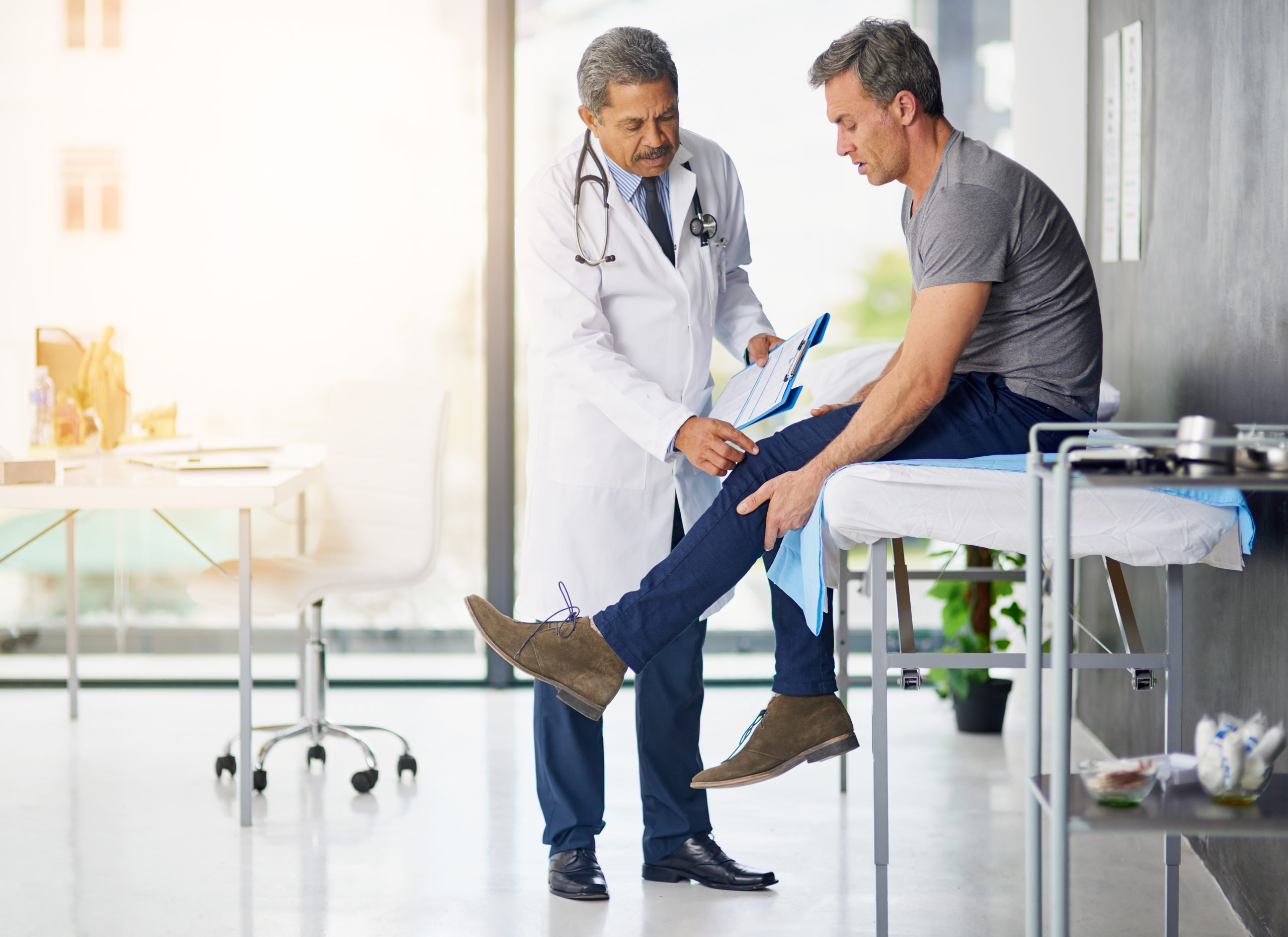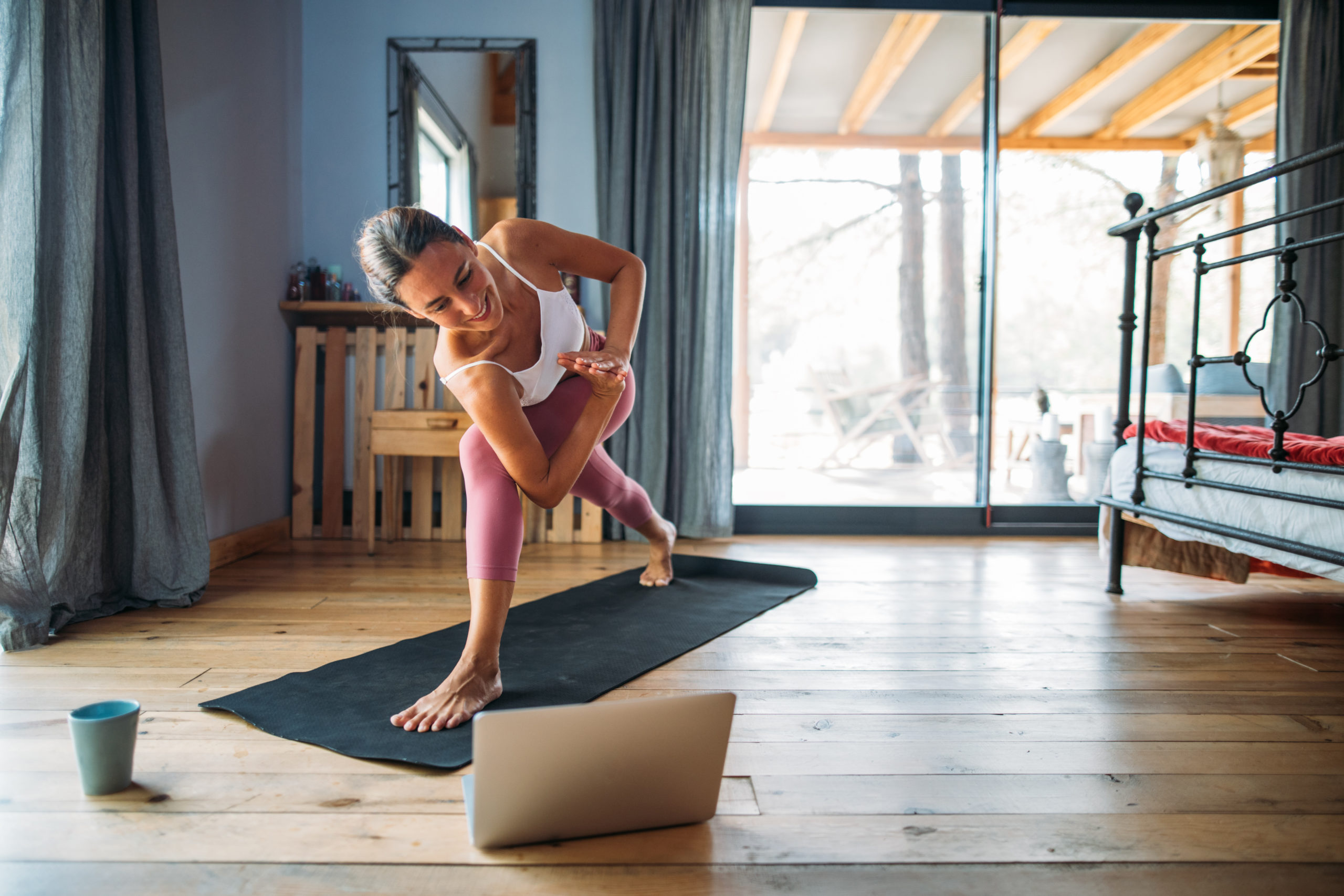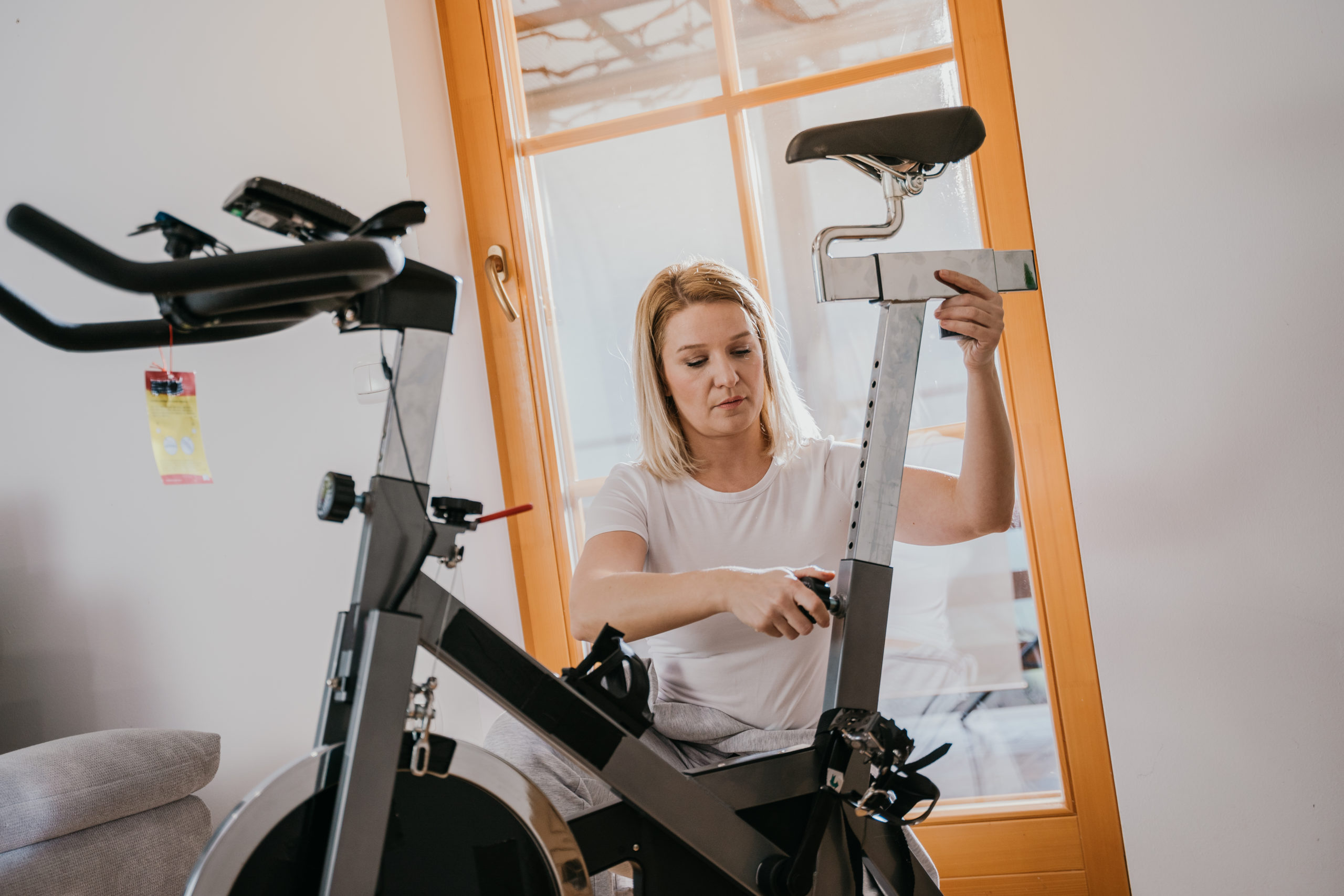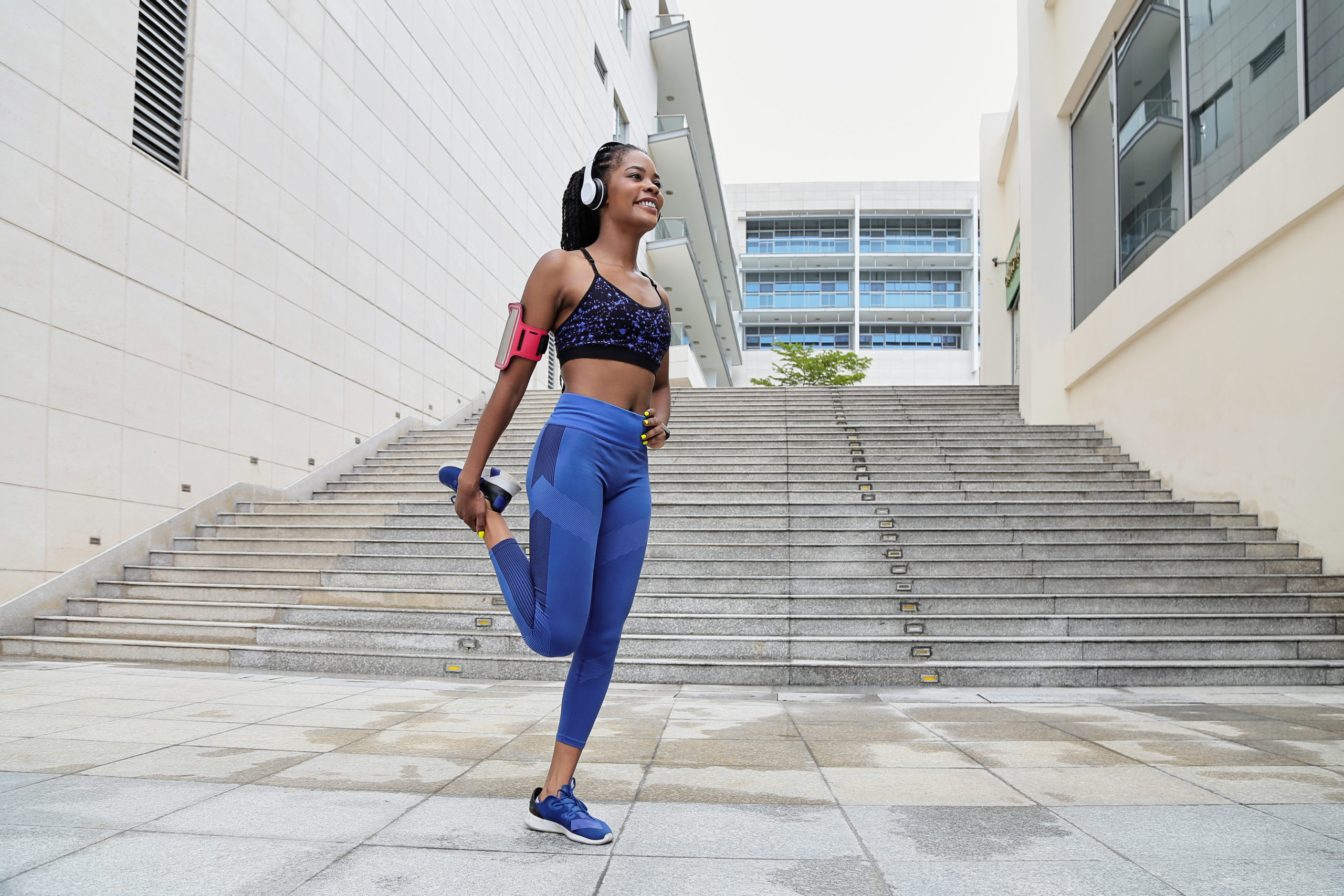Cycling — stationary, road, or otherwise — has its pros and cons. On the pro side, there’s the increased endurance and muscle definition. Downsides? The dull achiness that forms at the front of your knee, known as cycling knee pain.
Knee pain is a common side effect of cycling, affecting about a quarter of serious outdoor and indoor cyclists. If you’re one of them, we’re here to help.
Why Do Cyclists Experience Knee Pain?
“Knee pain arising from cycling is usually related to repeated use,” says Stacy Barrows, a physical therapist and Feldenkrais practitioner from Los Angeles.
Unless you crash your bike, in other words, you’re unlikely to experience a catastrophic knee injury. The pain you feel is due to pumping the pedals tens of thousands of times or more per week.
Perform any movement that often and overuse injury is a likely outcome, explains Barrows. The knee, a simple hinge joint, is happiest when it tracks straight, like a well-mounted door.
Even a small misalignment in your feet, hips, back, or shoulders can throw off that hinge movement.
The result? Micro-trauma with each pedal stroke, which can ultimately lead to pain in one or both knees.
However, cycling is a cardio activity that’s generally easy on the joints because your body absorbs very little impact.
Knee pain from running, hiking, or power-walking is usually caused by the repeated impact of the feet on the ground. Without that impact, joint pain is much less likely.
What Types of Knee Pain are Common in Cyclists?
The most common type of knee pain from cycling is patellofemoral pain. That’s a dull, achy sensation in the front of the knee, around the kneecap.
You might also experience pain on the inside or outside (medial or lateral sides), or the back of the knee (posterior).
“The movement of the knee is affected by many structures — among them your ankles, hips, lower back, and shoulders,” says Barrows.
If your glutes are tight, for example, your knee may track outward with each pedal stroke, causing pain over time.
If your core isn’t strong, your pelvis may rock excessively to one side, causing one knee to hyperextend.
When to Seek Help for Knee Pain
If your pain is severe, you have swelling, or the joint feels hot to the touch, check your symptoms out with your doctor.
Hobbling around and living on ibuprofen for several days are telltale signs that your problems are likely beyond the scope of this article. Get thee to the orthopedist.
Chances are your knee pain is exercise-related, which means you like to exercise, and probably don’t like not exercising. But if you keep doing the same type of exercise that’s causing your knee pain, you’ll wind up with more (and probably worse) knee pain.
Then your break from exercise might not be days or weeks, but months or even years.
So until your knee pain resolves itself, stop cycling. More on that below.
How to Treat Knee Pain From Cycling
Without the help of a specialist, it’s hard to determine the reason for a particular knee issue. But here are several ways to improve most cycling-related knee pain.
1. Get out of the saddle
The first step in fixing your knee pain from cycling is to stop doing the thing that’s causing your pain — namely, cycling. What’s worse: two weeks off or five months off?
In the interim, do something else that doesn’t exacerbate the pain. That might be yoga, strength training, walking, or using the elliptical machine.
Worst-case, you might have to lay off the lower body and focus on core strength, mobility, and upper body training temporarily. There are worse ways to spend a couple of weeks.
But whatever it is, do something. It will make returning to exercise that much easier, and you may well shore up some weak points while you’re at it.
Once you do return to cycling, start with some of the shorter classes on BODi — they help you set up the bike perfectly, so you can stop knee pain before it starts.
2. Home remedies for sore knees
If your knee is swollen or especially sore, elevate your leg and apply heat or ice for 20 minutes at a stretch up to a few times a day.
Barrows also recommends kinesiotape (KT tape), which can help support the knee, or physical therapy exercises, which can help promote recovery during this phase.
Quick reminder: Check in with your doctor if the soreness lasts more than a few days — and schedule an appointment immediately if the pain is severe and acute.
Home-remedy solutions like these will relieve pain so you can get back to your daily activities sooner.
3. Fix your seat height
While you’re taking time off your wheels, check your seat height or get a pro to check it for you.
“Knee pain can happen if your seat is either too high or too low,” says Barrows. A high seat causes the knees to overextend, while a seat that’s too low can cause the knees to bend too far.
“You’re looking for about a 20- to 25-degree knee bend at the bottom of your pedal stroke,” says Barrows. That’s a comfortably straight position — not rigid and locked out.
4. Roll out your quads
The quadriceps (the muscles on the fronts of your thighs) are the prime movers in cycling, working to straighten your knee over and over as you pedal away.
Over time this can put enormous pressure on the knee joint, pulling your kneecap off track. In avid cyclists, this tension can become chronic, even when you’re off the bike.
One solution, says Barrows, is to do some soft-tissue work on those quads. “I prefer a soft ball,” she says. “Put it against the wall and roll the fronts and sides of your thighs out for a few minutes on each side.”
You’ll release excessive tension, allowing the kneecap to track properly. Roll out each quad for 30 to 60 seconds at least once a day.
5. Stretch away knee pain
Follow up your soft-tissue work with some quad stretches that’ll help relieve cycling knee pain.
- Stand upright, holding onto a stationary object with your right hand for balance. Bend your left leg behind you and take hold of your ankle with your left hand.
- Stand upright and pull your heel toward your butt for 30 to 60 seconds, breathing deeply.
- Repeat on your other side.
6. Strengthen your hip extensors
Another cause of knee pain? An imbalance between the muscles that straighten your knee (those quads again) and the ones that bend it (your hamstrings and glutes). For that, says Barrows, you need to get yourself some furniture sliders.
Sliders are great for at-home leg curls — no machine needed.
Simply lie on your back on a pad, bend your knees and place your feet on the sliders. Brace your core, and lift your hips off the floor.
(No sliders? Use a small towel under your feet on a tile or wood floor or a thin paper plate on carpet.)
Then slowly slide your feet forward and back on the floor as far as possible, keeping your hips raised off the floor the whole time. Squeeze the muscles on the backs of your thighs throughout the move.
Make it harder by lifting your hips as high as possible, squeezing your glutes in the process, throughout the exercise. No sliders? Try the move with your feet on an exercise ball.
Work up to three sets of 15 to 20 reps, three times a week.
